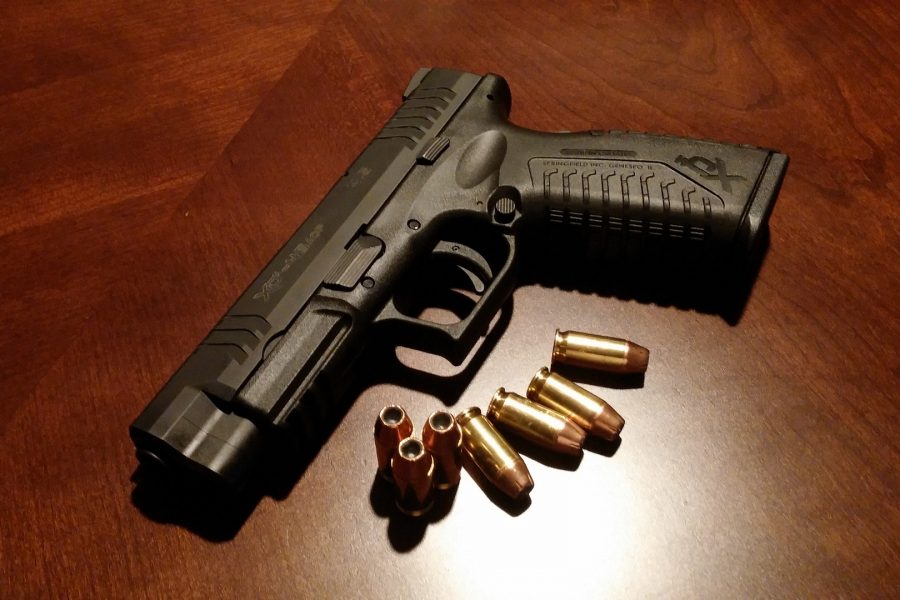Background
The Attorney General’s office is tasked with enforcing the Armed and Prohibited Persons System known as APPS which is designed to track firearms transactions in California. Unfortunately, it has been widely regarded as a failure as the list grew and grew without abate. Shoddy reporting and record keeping and almost non-existent enforcement meant something had to change.
Ten years ago, in a rare moment of bipartisanship, the State Legislature passed SB140 requiring the Attorney General’s Bureau of Firearms Enforcement to reduce the backlog of cases involving individuals believed to be in possession of firearms in violation of the law.
They are the so-called “prohibited persons.”
Along with the mandate – the legislature budgeted $24 million over three years in order to investigate prohibited triggering events, or PTEs. PTEs are the result of criminal convictions, violations of restraining orders, or mental health holds. SB 140 expired in 2019 amidst a continuing backlog of prohibited person investigations. In 2020, the legislature enacted further legislation to enhance seizures from prohibited persons including $40 million to support judicial seizures at sentencing.
The Attorney General is required to report the results of the program to the legislature annually.
UC Davis Study
Using 2015 statistics, researchers at the University of California, Davis reported that California had a then backlog of 18,976 individuals on the prohibited persons list. Given that both prohibited and non-prohibited persons own an average of 2.6 forearms each, there were an estimated 50,000 firearms in the hands of prohibited persons. Continuing, the research noted, “prohibited firearms owners were more likely to be male and to be Black or Hispanic than non-prohibited owners.”
The researchers concluded “Retention of firearms among persons who become lawfully prohibited from possessing them is common in California.”
Since that study was released, the number of prohibited persons has grown. On Jan 1, 2022, there were 23,869, which is down from 2021 (when there were 24,509) but up from 2020 when there were 23,598.
The increase from 2015 to 2022 is 25.78 percent.
Enforcement
To track the over 23,000 individuals currently on the list and attempt to keep up with an ever-increasing number of individuals being added, the Bureau of Firearms has approximately 35 investigators statewide. Simple arithmetic shows that each investigator is responsible for 681 prohibited persons each. To reduce that number Mr. Bonta has awarded $8 million in grant money to county sheriffs for firearms enforcement.
In 2021 $5 million was awarded to ten county sheriff’s offices and a further $3 million in 2022. The collective effort of the 10 county sheriff offices in 2021 was 207 individuals “disassociated” of all known firearms. Or a cost of $24,154.00 per individual. Certainly, more work was done. Individuals were removed who moved out of state or were deceased – some had expired orders -and in other cases – “all” leads were exhausted.
DOJ supported the formation of task forces in Tulare and Contra Costa County that seized 169 firearms. Incidental cases involving prohibited persons netted another 116 firearms.
The combined net effort of all of this was 1,437 firearms seized. Of those – 36 were assault weapons.
Unfortunately, staffing and budget challenges are made worse by a DOJ information management system which is badly outdated, suffered a massive data leak, and is unable to share information with other law enforcement databases.
That dissociated rate barely stays ahead of new entries in the system and at the current clearance rate it will take decades to eliminate the backlog.
The 23,869 prohibited individuals are mostly felons and, if the UC Davis study is accurate, this will necessitate robust enforcement actions including serving search warrants in communities that are highly suspicious of police investigations and operations.
However, doing nothing runs the risk of leaving 50,000 firearms in the hands of felons and others judged mentally unfit to own firearms.
Both Governor Newsom and Attorney General Bonta have made firearms enforcement a priority of their administration. We will see if their actions match their words.
Steve Smith is a senior fellow in urban studies at the Pacific Research Institute, and is the author of the new PRI study on California’s growing crime trend, “Paradise Lost.”


